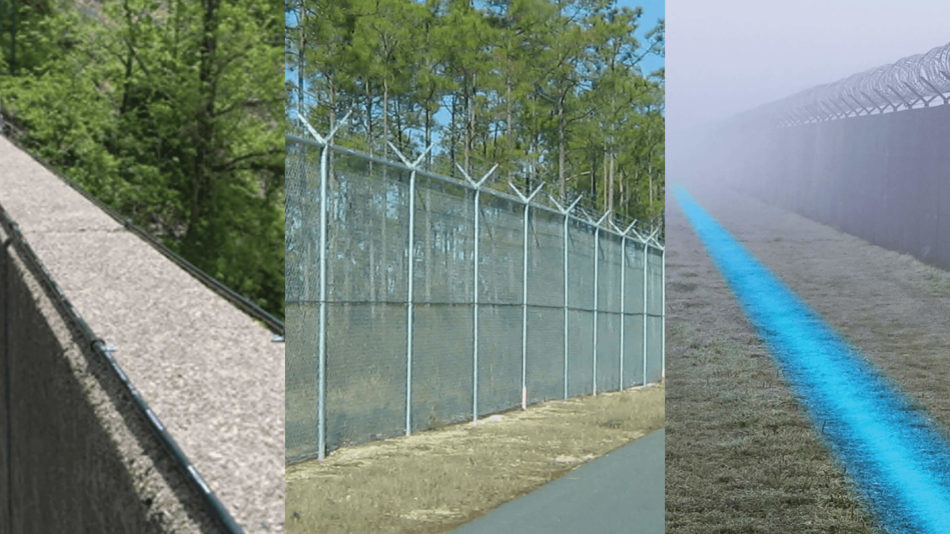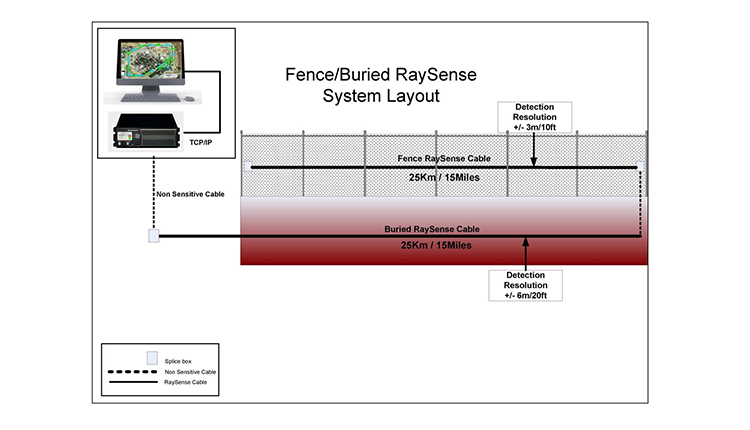A Complete Overview to Fiber Optics Infrastructure for Security Installations
The Ultimate Overview to Fiber Optic Protection Equipments for Your Company
In an age where safety issues are critical for organizations, recognizing the intricacies of fiber optic technology can be transformative. This overview outlines exactly how integrating fiber optic safety systems not just boosts information defense yet additionally uses advantages like resistance to interference and real-time surveillance capacities.
Recognizing Fiber Optic Technology

The core of a fiber optic wire contains a thin glass or plastic facility, bordered by a cladding layer that reflects light back into the core. fiber optic security system. This design makes sure minimal loss of signal toughness, even over substantial ranges. There are 2 key types of fiber optic cables: single-mode and multi-mode. Single-mode fibers are developed for long-distance transmission, while multi-mode fibers appropriate for shorter ranges, frequently utilized within buildings.
Optical fiber are not only much faster yet likewise a lot more safe than typical electrical wiring. Their intrinsic resistance to electro-magnetic disturbance and the trouble of using the signal without discovery make them a favored selection for services prioritizing data integrity and protection. As organizations increasingly count on secure and effective interaction systems, recognizing fiber optic innovation becomes crucial for educated decision-making.
Key Advantages of Fiber Optic Safety
When thinking about safety options for an organization, the advantages of fiber optic systems are especially compelling. Most importantly, fiber optic innovation uses phenomenal data transmission speeds and data transfer capability, making it excellent for dealing with high-resolution video clip feeds from monitoring video cameras. This capacity makes sure that safety employees receive real-time data, boosting general action times to prospective safety hazards.
In addition, fiber optic cords are inherently resistant to electro-magnetic interference, which can compromise the stability of conventional copper-based systems. This resistance guarantees that the data transmitted continues to be protected and uninterrupted, offering a more reliable protection facilities. Additionally, optical fiber are much less susceptible to physical damages, as they are made from glass as opposed to metal, reducing upkeep costs and downtime.
One more considerable advantage is the enhanced scalability of fiber optic systems. As organization needs develop, fiber networks can be conveniently broadened to suit extra safety gadgets without significant overhauls to the existing facilities. Fiber optic systems supply enhanced cybersecurity functions, consisting of security capabilities that protect sensitive data from unapproved accessibility. Jointly, these benefits make fiber optic safety and security systems a robust selection for services seeking to improve their security procedures.
Setup Refine and Factors To Consider
Thinking about the complexities included, the installment process of fiber optic safety and security systems needs cautious planning and execution. The initial step involves a comprehensive site analysis to recognize optimum areas for cabling and tools. This evaluation should consider environmental factors, existing framework, and possible vulnerabilities.

Furthermore, the setup has to comply with local building codes and sector criteria. This might include collaborating with numerous stakeholders such as structure managers, IT teams, and safety workers to guarantee smooth assimilation with existing systems.
Post-installation, extensive screening is needed to confirm system performance and recognize any type of concerns that might develop. By prioritizing these factors to consider during the setup procedure, companies can ensure a durable visit site and efficient fiber optic security system that satisfies their specific protection requirements.
Latest Developments in Fiber Optic Protection
Recent innovations in fiber optic innovation have dramatically boosted the capacities of safety and security systems for organizations. One of one of the most noteworthy advancements is the integration of fiber optic sensing units that can identify vibrations and intrusions along the boundary of a facility. These sensing units offer real-time tracking, allowing quick reaction to possible breaches.
Furthermore, the advancement of dispersed fiber optic sensing innovation permits for the continual tracking of huge areas with a single fiber wire. This method not just reduces setup prices but likewise improves the reliability of keeping an eye on systems by removing the need for multiple, different sensors.
Moreover, innovations in multiplexing techniques have enabled businesses to transmit huge quantities of information over fiber optic networks, boosting the capacities of video clip security systems. High-definition video feeds can now be sent over cross countries without loss of quality, guaranteeing that safety personnel have accessibility to clear and workable information.
Lastly, using synthetic intelligence (AI) combined with fiber optic systems is revolutionizing threat detection. AI algorithms can assess data from fiber optic networks to identify unusual patterns or behaviors, enabling aggressive safety and security actions. These innovations jointly stand for a substantial jump onward in fiber optic protection modern technology.
Picking the Right System for Your Organization
Picking the suitable fiber optic protection system for your organization is vital for making sure ideal defense and satisfaction. To make an enlightened selection, examine your particular security requirements, considering factors such as the dimension of your facilities, the nature of your operations, and potential vulnerabilities.
Begin by reviewing the degree of safety and security required; for circumstances, risky atmospheres might require advanced systems with incorporated security and breach detection capabilities. Next off, think about scalability; as your business grows, your protection system ought to can broadening to accommodate increased demands without substantial overhauls.
Additionally, investigate the integrity and efficiency of various site web systems. Search for carriers with established online reputations and client endorsements that vouch for their service high quality. It's also suggested to ask about the modern technology's compatibility with existing facilities, guaranteeing a smooth combination procedure.
Conclusion
In conclusion, fiber optic safety systems present a durable solution for enhancing organization safety and security facilities. The combination visit this site right here of high-speed data transmission, resistance to electromagnetic interference, and progressed surveillance capacities significantly improves total defense (fiber optic security system). By understanding the innovation, acknowledging its benefits, and considering the installment process, organizations can make enlightened choices. The most recent advancements further boost the efficiency of these systems, guaranteeing that companies remain protected and versatile in an ever-evolving risk landscape.